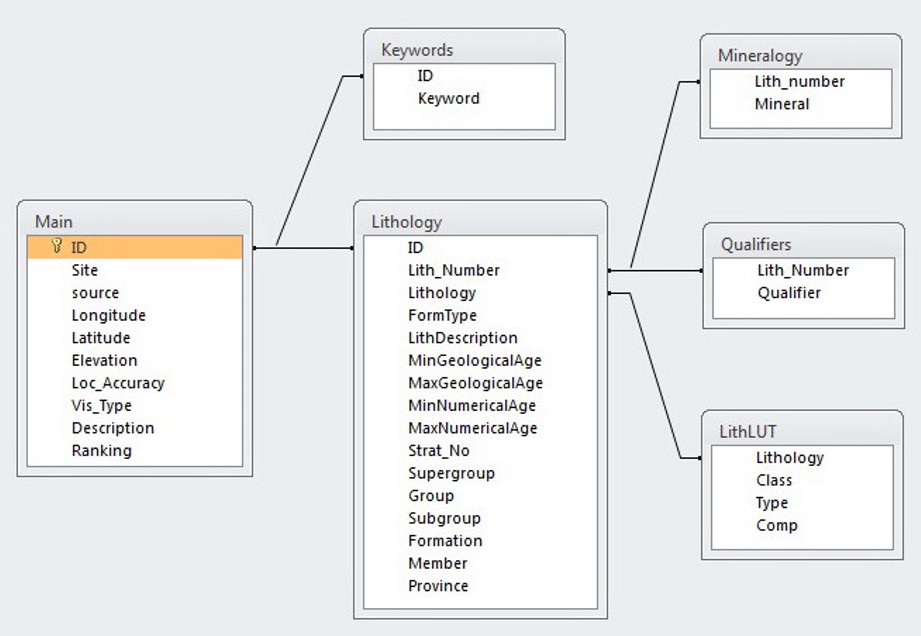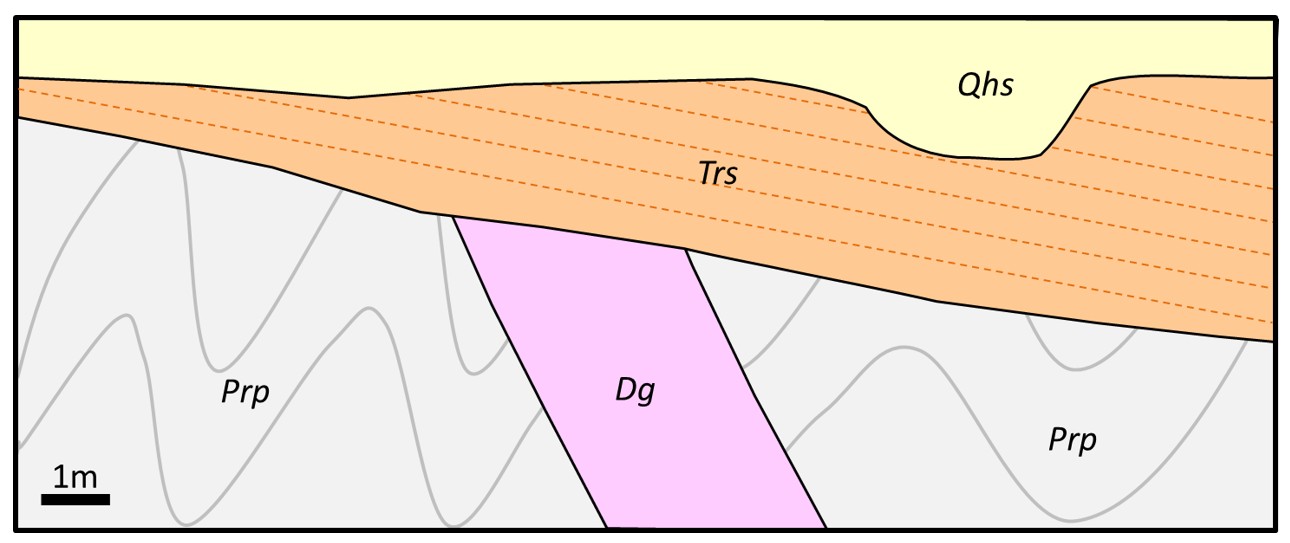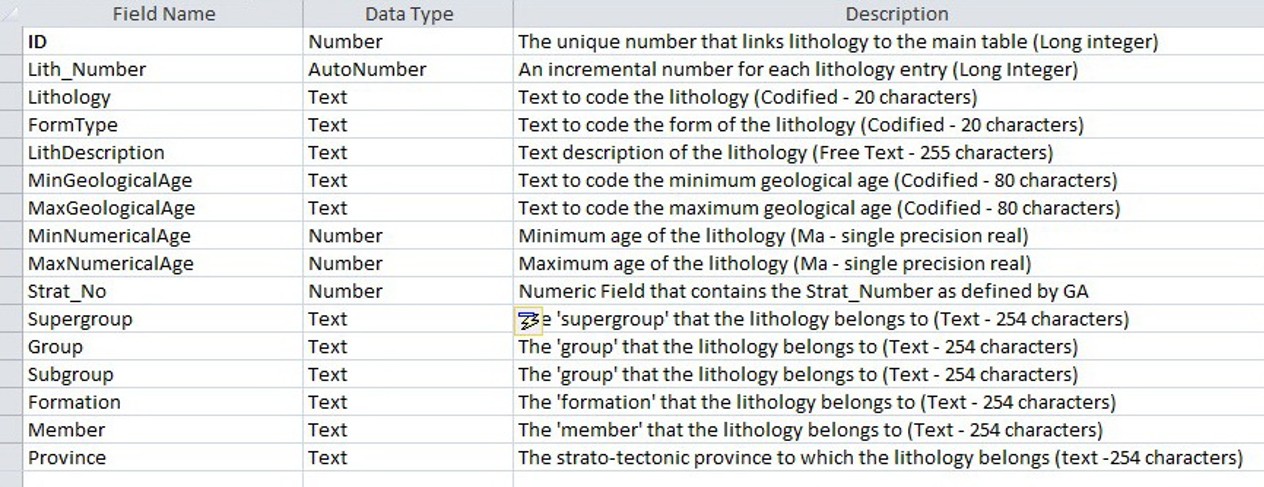Metadata
Geological Metadata
All AusGeol visualisations have geological metadata that is stored in an associated relational database. Structured metadata records provide systematic documentation of the geological characteristics of each outcrop and facilitate effective and complex database query operations.
Geological visualisations record features that may have complex attributes which cannot readily be encoded using simple 'flat' data structures. The complexity of geological attributes potentially associated with a geological visualisation is well illustrated by the conceptual outcrop below.
The geology of this conceptual site consists of folded Proterozoic phyllite (Prp), intruded by a dyke of Devonian biotite-hornblende granodiorite (dg), unconformably overlain by thickly bedded Triassic sandstone and siltstone containing plant fossils (Trs) and overlain by unconsolidated Holocene alluvial sediment (Qhs).
This site thus has:.
-
Five lithologies (phyllite, granodiorite, sandstone, siltstone and alluvial sediments)
-
Rocks from four different time periods (Proterozoic, Devonian, Triassic and Quaternary)
-
Rocks from at least four different 'stratigraphic' units
-
'Structural' features including folds and unconformities
-
Textural, mineralogical and palaeontological attributes
In addition to these geological attributes other information about the site also needs to be recorded including:
-
Unique identifier (numeric)
-
Location (numeric)
-
Descriptive location ( free text)
-
Locational accuracy (numeric)
-
Name of the person who acquired the visualisation (coded text)
-
Date of image acquisition (date)
-
Type of visualisation (coded text)
-
Geological description of the site (free text)
To effectively encode all of these attributes requires multiple tables, linked by a range of relationships. It cannot be adequately represented using a simple flat file structure.
The AusGeol attribute database enables encoding of 'real' relationships between the attributes (eg: stratigraphy and age apply to specific lithologies, not to the entire outcrop). and diverse database queries (eg: show all visualisations that depict folds, show all visualisations that depict rocks of lower Palaeozoic age or visualisations showing basic extrusive igneous rocks).
The basic structure of the AusGeol attribute database is illustrated below. The database has initially been developed in Microsoft Access with periodic upload of data tables to a Django database for the webpage. In the future the Django database will become the primary database which will facilitate on-line data upload and management.

The Main table encodes the information for which there is only one possible attribute for each visualisation. The fields in the Main table are shown below.

Fields in the Main table are: a unique numerical identifier (ID), a codified field identifying the person who acquired the imagery (Source), location information (Longitude, Latitude, Elevation and Loc_Accuracy), a codified field for the type of visualisation (Vis_Type), a free text descriptive field (Description) and a numeric field that indicates the quality of the visualisation (Ranking).
Each visualisation may depict many lithologies, and information about each of these rock types is primarily encoded in the Lithology table (below).

